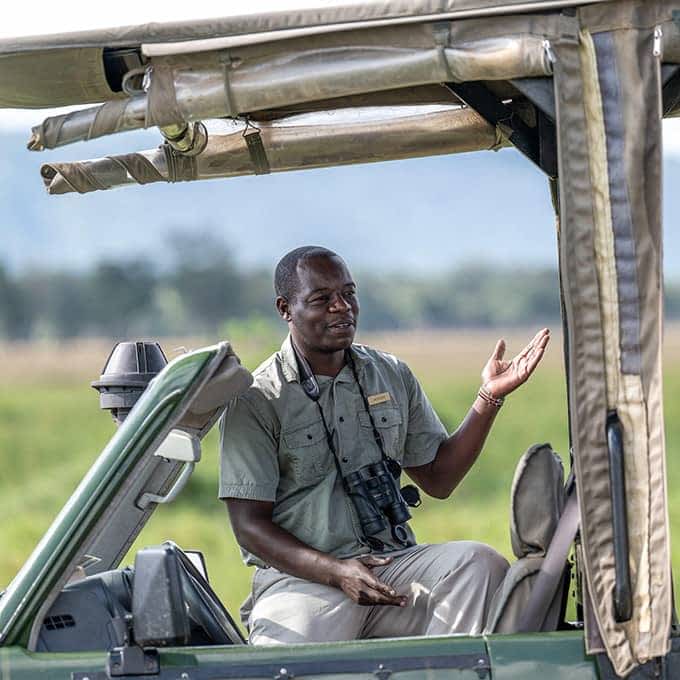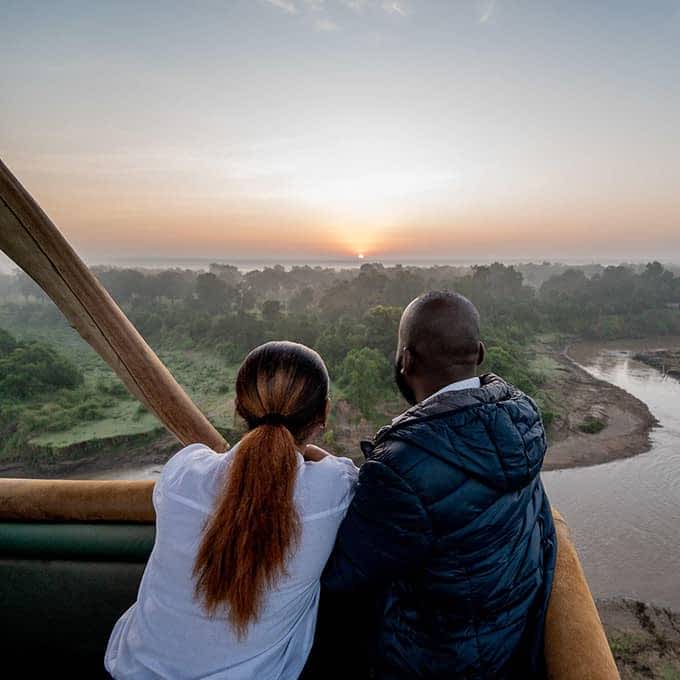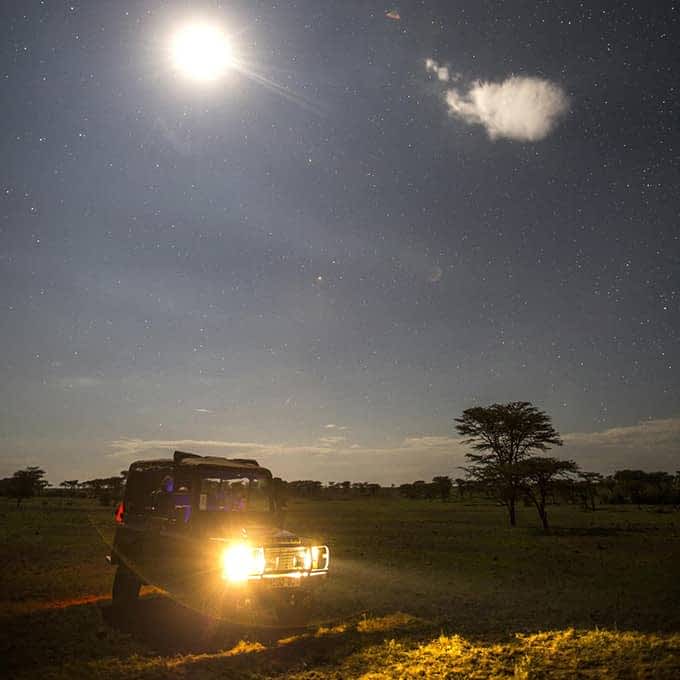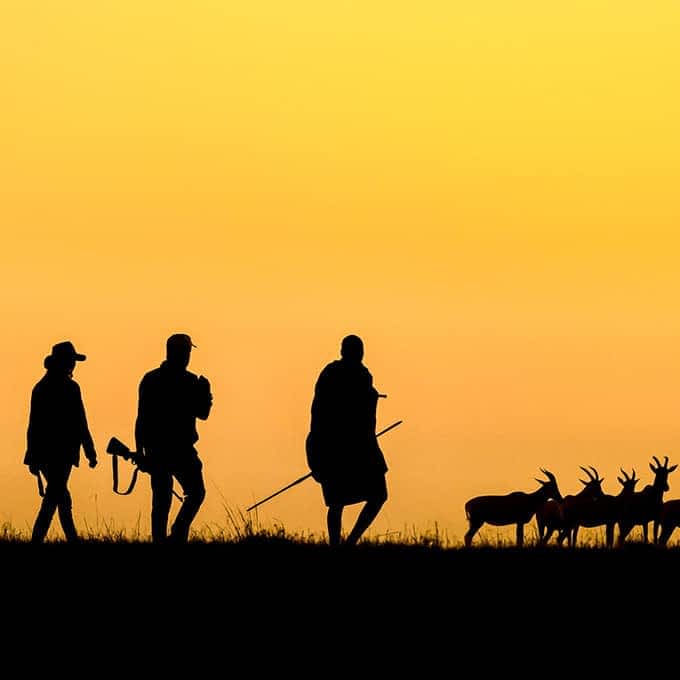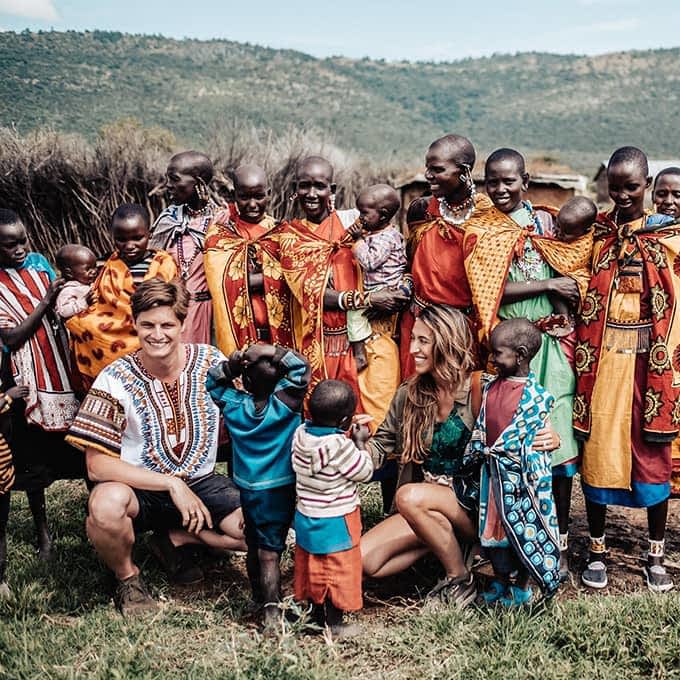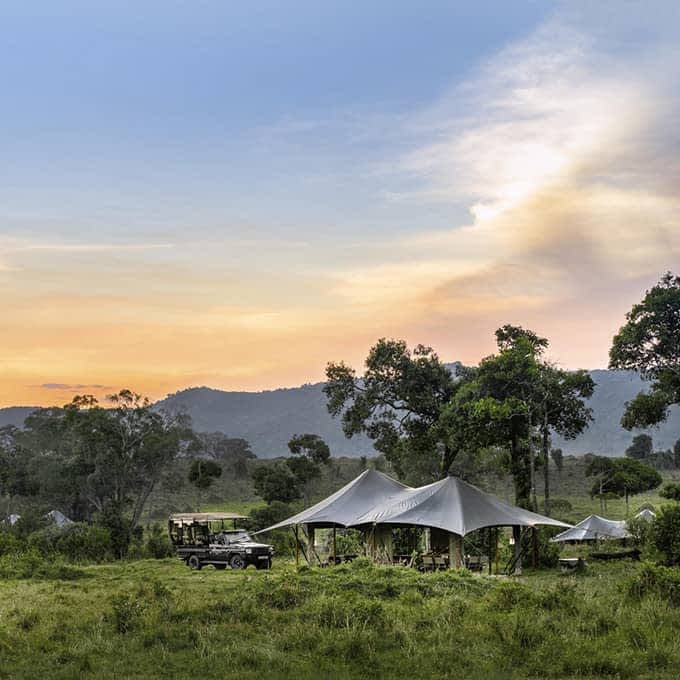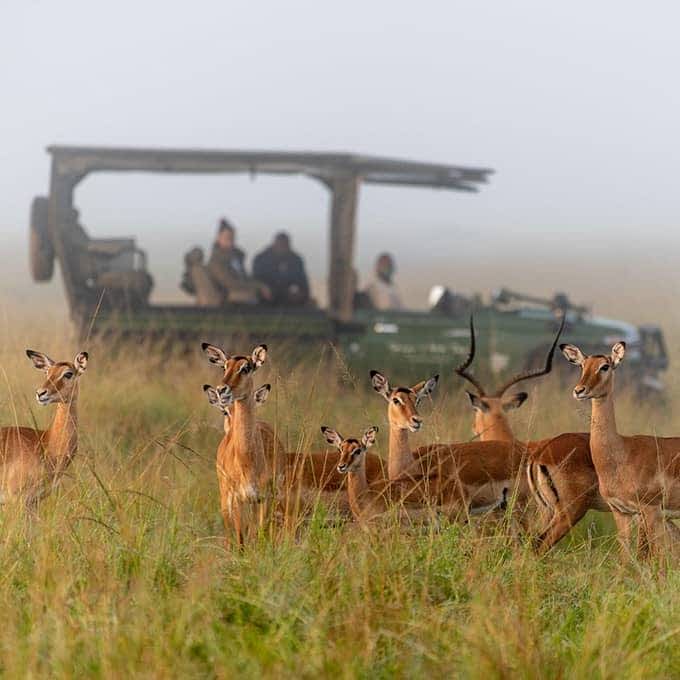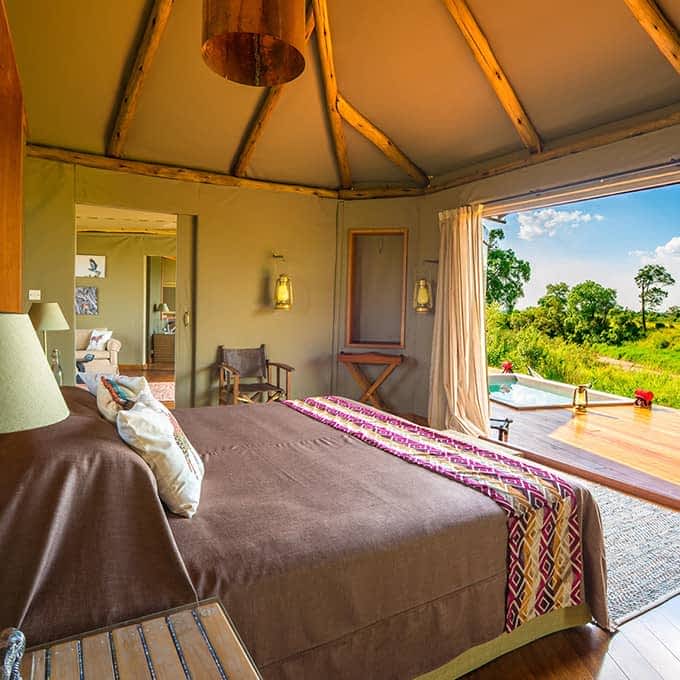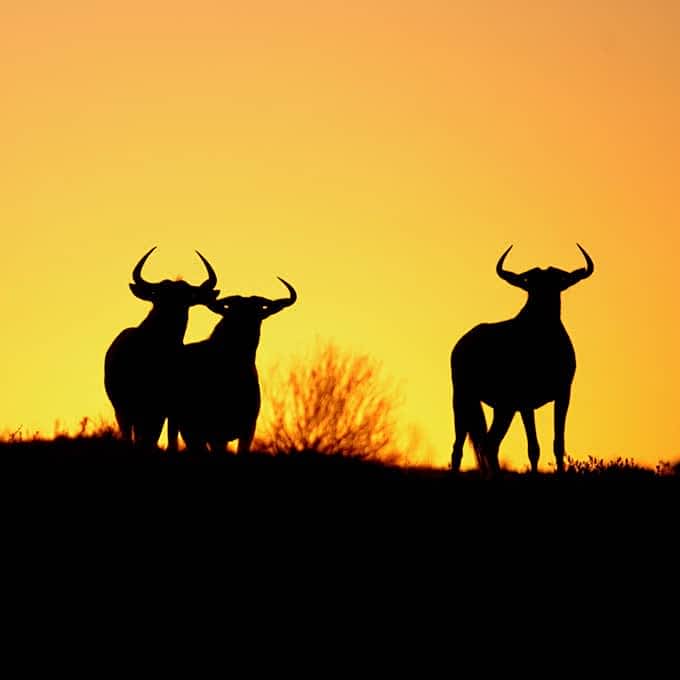The Greater Masai Masai Mara
Stepping back in time, the Maasai people lived in harmony with the land and its wildlife. Lions were only hunted during a right of passage for young Maasai warriors. This all changed when the area and its abundant wildlife was discovered by European hunters. The arrival of hunting safaris led to the demise of countless animals until by 1961 there were only nine lions left living in the Mara. Since then, the Masai Mara National Reserve was established to help conserve the land and its wildlife. The effects of the conservation efforts have been significant. The Greater Masai Mara ecosystem is one of the most bountiful safari destinations worldwide. Read all about the Masai Mara National Reserve.
Trouble in paradise
With the arrival of modern-day safari travelers and the safari organizations, local Maasai leaders saw their way of life threatened and the popularity of the region benefitting all but its original inhabitants. The Maasai living near the reserve were no longer allowed to graze their cattle within the reserve. Up until the establishment of the reserve, the area had always been the land of the Maasai people and their ancestors. The conservation efforts within the reserve and the successful growth of wildlife also caused more attacks on the Maasai cattle by predators. In an attempt to create a more sustainable situation for their people, local Maasai tribal leaders banded together to create several wildlife conservancies to the north of the Masai Mara National Reserve.
How do Masai Mara conservancies work?
With the arrival of conservancies, mass-cattle grazing by the Maasai is a thing of the past. The conservancies, as the name alludes to, conserve the land and its wildlife. Most of the Maasai ranches to the north and east of the Masai Mara National Reserve have been converted to wildlife conservancies. The Maasai families that own the conservancies lease their land to safari organizations and lodges for a monthly fee. Safari organizations also pay Maasai landowners a daily fee for each tourist that visits the wildlife conservancies. These fees are in turn invested in the local Maasai community and generally are used for education or other developmental initiatives. The land in these conservancies which was once over-grazed by cattle, is now being conserved and in some cases the concentration of wildlife even exceeds this of the Masai Mara National Reserve. There aren’t any fences between the conservancies, so wildlife is free to roam throughout the land.
The road less travelled - exclusive safari destinations
One of the best features of staying in one of the conservancies is the feeling of exclusivity. In an effort to conserve wildlife and minimize human impact, Masai Mara conservancies have strict guidelines including a maximum number of visitors allowed to stay at the conservancy per night (maximum number of beds per square kilometer). There are only a few accommodation options in each wildlife conservancy, keeping the number of visitors to the area limited. There is quite a difference between being in the only safari jeep as far as the eye can see or being stuck in a traffic jam of jeeps while out and about. Traffic jams in the bush are even more unpleasant than back at home.
Masai Mara conservancy safari options
An added benefit of staying at the Masai Mara conservancies is having an entire range of (additional) safari options available to you. Conservancies offer the excitement of bush walks, lovely bush meals, cultural interaction with the Maasai and exciting night game drives. This is unique to the conservancies and isn't an option while staying in the actual Masai Mara National Reserve. Most conservancy safari camps also offer a day safari to the national reserve proper (additional entrance fees may be applicable). If you're' planning your visit during the Great Migration, a day safari into Masai Mara National Reserve is a must since this is best seen from within the reserve itself. Day trips into the conservancies while staying at an accommodation within Masai Mara National Reserve is not allowed.
Masai Mara safari conservancy areas
Please find below an overview of the most important Masai Mara safari areas and conservancies.
Masai Mara National Reserve
One of the most iconic safari destinations in the world, the Masai Mara National Reserve offers its visitors everything from the grandeur of the Great Migration to intimate encounters with a wide variety of animals you probably never knew existed. From dramatic wildebeest Mara River crossings to Musiara Marsh’s playful monkeys, the Masai Mara National Reserve is every safari traveler's dream. Please be aware that some sectors of the reserve can become extremely busy in high season which negatively impacts your safari experience.
Mara Triangle
Tucked away between the Serengeti National Park in Tanzania, the Mara River and the Olooloo Escarpment lies Masai Mara National Reserve’s wildlife sweet spot: The Mara Triangle. Arguably the location of the reserve's most dramatic scenery, the volcanic hills and riverine forests of the Mara Triangle are home to the highest concentration of lions, cheetah and a host of other wildlife species. Learn all about the Mara Triangle.
Mara North Conservancy
Exclusive and private, the Mara North Conservancy only allows a limited number of visitors into the area at any one time. Its varied landscape, from secret patches of woodlands to vast wide-open plains, is home to the Big Five and many more. From the big cat maternity ward at Leopard Gorge to the lesser-known wildebeest migration at Loita Hills, the Mara North Conservancy has something for everyone. Learn all about Mara North Conservancy.
Mara Naboisho Conservancy
Aptly named, the Mara Naboisho (‘come together’ in Maasai or Maa language) Conservancy, is a shining example of what good can come out of teamwork. The conservancy stems from the collaboration of over 500 Maasai families working together to conserve their land and wildlife. The result: the Mara Naboisho Conservancy has only seven camps, but countless big cats, herds of wildebeest, giraffes and elephants. Learn all about Mara Naboisho Conservancy.
Olare Motorogi Conservancy
The Olare Motorogi Conservancy boasts the highest concentration of lions per square kilometer, yet the lowest density of tourists. Scan the skies for the over 50 different species of raptors or keep on the lookout in the acacia woodland and Olare Orok and Ntiakitak river valleys for predators and prey. A success story among all conservancies, Olare Motorogi Conservancy is a safari dream come to life. Oh, and did we mention that Sir Richard Branson has a safari lodge here? Learn all about Olare Motorogi Conservancy.
Ol Kinyei Conservancy
This conservancy's grassy plains and rolling hills are home to only two small camps (and two mobile camps). It is the perfect spot for bush walks and a local Maasai culture immersion. With over 300 bird species, the conservancy is every bird-watcher's dream. Rather spot larger land-living animals? The Mara Ol Kinyei Conservancy has its own lion pride, leopards, elephant, buffalo and giraffe as well. Learn all about Ol Kinyei Conservancy.
Olderkesi Wildlife Conservancy
If solitude, exclusivity and a high concentration of wildlife is what you're looking for when planning a Masai Mara safari holiday, perhaps you'll be lucky enough to book a stay at the Olderkesi Wildlife Conservancy. In this most remote of all the conservancies, there's only one camp with a capacity of twenty rooms. The most common sightings at Olderkesi Conservancy are of elephants and big cats such as lions, leopards and cheetahs. Learn all about Olderkesi Wildlife Conservancy.
Lemek Conservancy
One of the smallest and most modest wildlife conservancies lies in the northwest corner of the Mara, the Lemek Conservancy. Although you're less likely to see migrating herds in this area, it is likely to see plenty of game during off-road driving, walking safaris, bush meals and night safaris.
Ol Choro Oiroua Conservancy
The very remote Ol Choro Oiroua Conservancy has three accommodations with among them 65 rooms in total. To the west lies the Mara River and to the east lie vast open plains with long strands of green riverine forest. There's plenty of wildlife to see this area, although most animals are permanent residents. Migratory animals rarely travel far north to the Ol Choro Oiroua Conservancy.
Further reading

